The author's parents received this telegram the first week of October, 1944: |
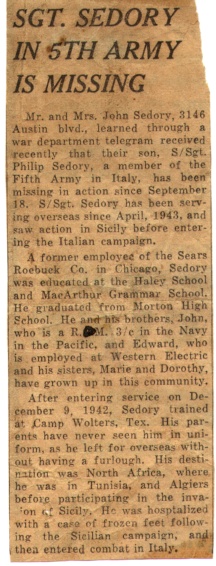 | Berwyn Life, FRIDAY, NOVEMBER 3, 1944SGT. SEDORY IN 5TH ARMY[1] IS MISSING Mr. and Mrs. John Sedory,
3146 Austin blvd.[2], learned through a war department telegram received recently that their son, S/Sgt.
Philip Sedory, a member of the Fifth Army in Italy, has been missing in action since September 18. S/Sgt. Sedory has been serving overseas since April,
1943[3], and saw action in Sicily before entering the Italian campaign. [Thanks to staff of the Berwyn Public Library, who were very helpful in ascertaining this article came from Berwyn Life, and providing the November 3rd, 1944, date.] |
It took quite some time for the following postcard to arrive at his parent’s house, but they finally knew Phil was no longer missing and had survived the combat when they read what you see here; knowing it was their son’s handwriting (click on each side to enlarge): |
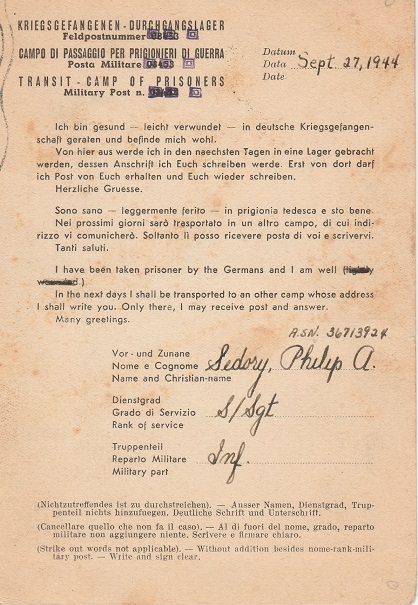 |
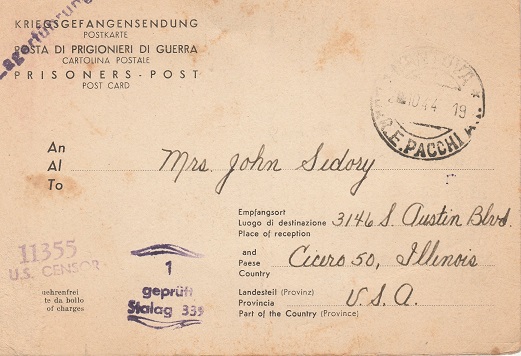 |
See Appendix D-1 for Phil's account of his time as a POW in Stalag 7A during WWII. |
SGT. SEDORY | 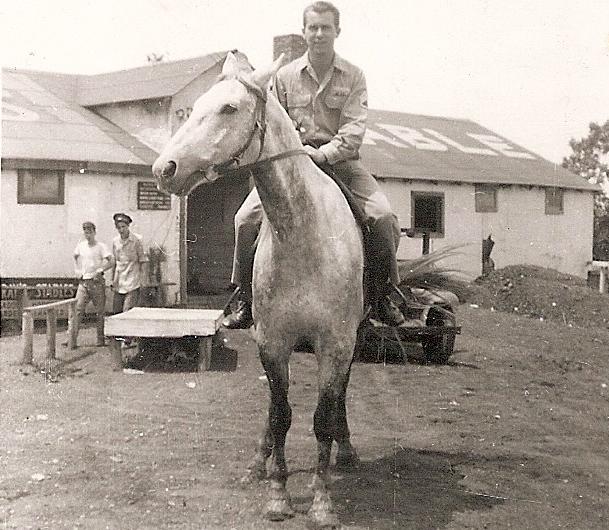 |
Here's a better shot of Phil, for which we have been able to identify the badge and ribbons above his front left pocket, and the patches on his sleeves: |
|
|
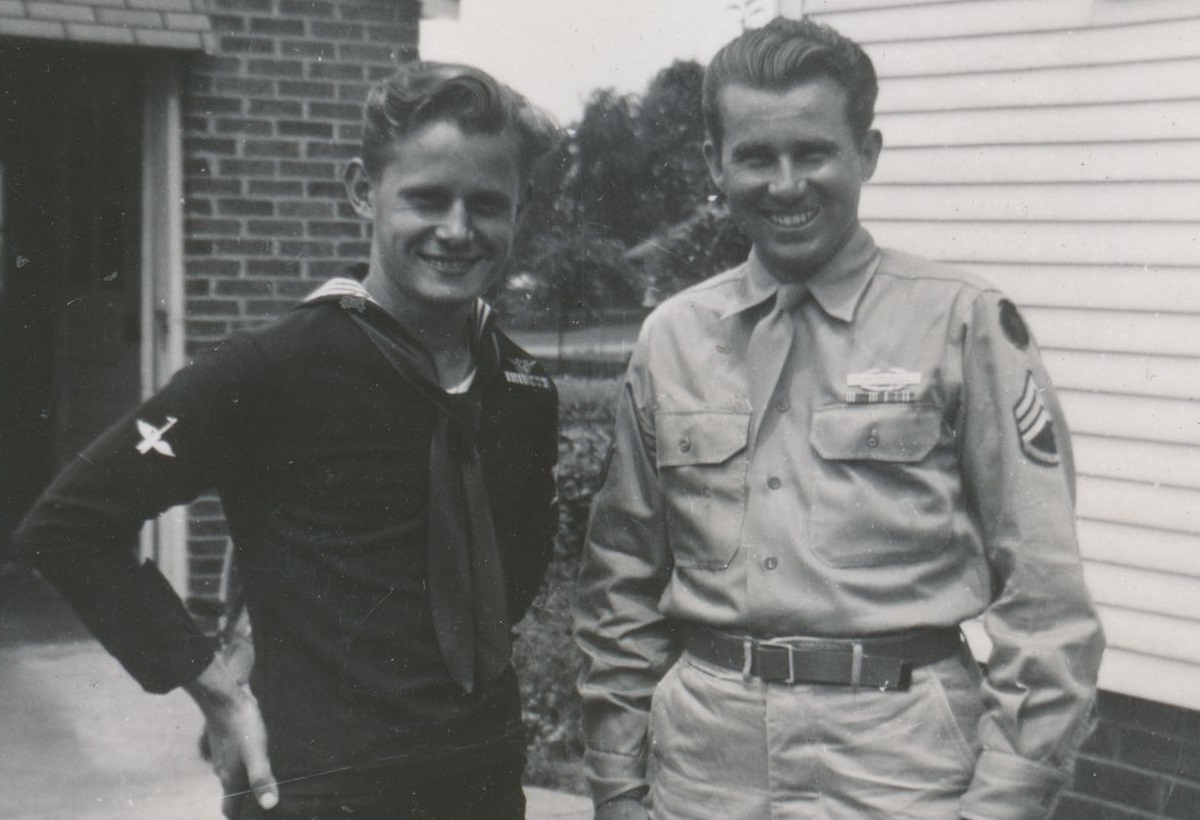
Footnotes 1[Return to Text] Although Phil was indeed part of the 5th Army (also known as "US Army North"), that "Army" was comprised of the US II (2nd), US IV (4th) and British XIII (13th) Corps, and Phil was part of the II Corp. The US II Corp itself consisted of the US 34th, US 88th and US 91st Infantry Divisions; Phil being part of the 34th Infantry Division (or "Red Bull" Division, due to the design of its shoulder patch; which you can see in the last picture of Phil above). 2[Return to Text] Some time after our author sailed off on the USS Crouter, his parents moved from Stickney to 3146 Austin Blvd. in Cicero. However, some time after John and Phil returned from overseas, and both Ed and then John (and their new wives) had temporarily lived there, they finally moved back to their home at 4109 S. Highland in Stickney. The family did not leave that home permanently until John, Sr. & Mary and Dorothy, moved to another home in Riverside, IL near the end of 1962. 3[Return to Text] In his own words, Phil: "Boarded the English transport Andes on April 18 [1943]" (Link contains: "Andes ... sailed down the coast to New York. In the next two months she made three crossings from there to Casablanca, bringing a total of 22,000 troops to Morocco for the North African Campaign.") Phil's account continues with: "Sailed from New York harbor on the 19th. Arrived at Casablanca on April 27th (morning) after one day of rough weather in which I and many others became miserably seasick. The food served on ship was poor and the conditions were exceedingly overcrowded with an estimated 4500 troops." After marching through Casablanca to the railroad, they boarded boxcars to reach their final destination. Phil added: "Another experience I'll never forget in Casablanca was the thousands of insects similar to large grasshoppers flying through the air towards us." 4[Return to Text] Although Sicily is in the middle of the Mediterranean Sea, just like on the big island of Hawaii, it can get very cold above certain elevations on Mount Etna (see here for a beautiful snow-covered view). So it must have been somewhere up the sides of Mount Etna that Phil got his feet frozen. |